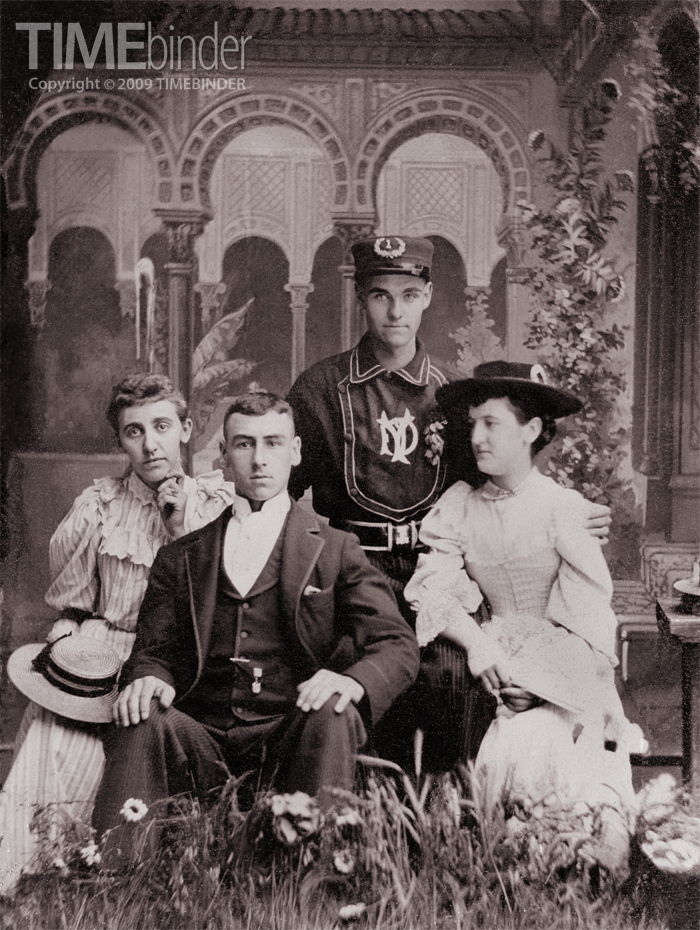
The rise of industry and Victorian society set us squarely on the road to making things appear to be what they were not, and nowhere is it more evident than in the photographers’ studios where painted backgrounds and props ranged from the pretentious to the bizarre. The wealthy, and anyone with the price of a portrait at the local fair or tourist spot, could be surrounded by something grand and atypical of the life they led.
At least the 19th century made no effort to do it well; no one was going to believe for an instant that these two couples were in an opulent European garden – even with the addition of ersatz grass and flowers in the foreground!
Striking a pose was more or less expected of the process – and the results are as inscrutable as they are fascinating. The fireman was not on duty but his uniform was a mark of his position in the community; the seated gentleman is very well set up in striped pants, waistcoat, vest and watch chains with fobs. One woman, hand on chin, holds her hat in her lap in a casual manner while the other woman wears her hat and holds an unfolded fan and rests her arm on the fireman’s knee (proof that he is also seated and not standing). We can imagine that this portrait was just what they wanted; how pleased they were with how they looked we’ll never know – but here it is.
Technical note: This is a small tintype, which like most has darkened with age and may have never had much brilliance (some judicial editing has supplied some of what it lacked). A tintype was a “one off”, so if both couples wanted one then more than one photograph would be taken, and, of course, they would not be precisely alike. A camera lens inverts and reverses what the eye sees, so direct images like daguerreotypes, tintypes and ambrotypes are “backward” which is not normally evident unless there is print in the photo; this image has been flopped so that the number and insignia on the cap read correctly.